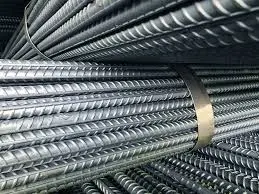HRB400 Grade Rebar Continues to Dominate Construction Industry as HRB335 Phases Out
In the ever-evolving construction industry, the demand for high-quality reinforced Steel Bars (rebar) has never been greater. Among the various grades available, HRB400, a hot-rolled ribbed bar, has emerged as the most widely used Rebar due to its excellent mechanical properties and cost-effectiveness. Meanwhile, the older HRB335 grade is gradually being phased out, particularly in large-scale infrastructure projects such as subways.



HRB400: The Backbone of Modern Construction
HRB400, also known as Grade Three rebar, is a hot-rolled ribbed bar that has become the standard choice for a wide range of construction applications. Its superior yield strength, tensile strength, and ductility make it ideal for use in bridges, residential buildings, roads, and other critical infrastructure projects. The rebar is extensively used as the main reinforcement in concrete structures, beams, and columns, ensuring the structural integrity and longevity of these constructions.
Compared to the older HRB335 (Grade Two) rebar, HRB400 offers significantly better mechanical performance. HRB335, which has been widely used in subway projects and other infrastructure, is now being phased out due to its lower yield and tensile strength. As construction standards continue to rise, the industry is shifting toward higher-grade materials like HRB400 to meet the demands of modern engineering.
HRB500: A High-Performance Alternative with Limited Adoption
While HRB400 remains the industry favorite, HRB500 (Grade Four) rebar has also entered the market, offering even higher performance in terms of strength and durability. However, its adoption has been limited due to its higher cost. For most engineering projects, HRB400 provides a balance between performance and affordability, meeting construction requirements without significantly increasing project budgets.
The Gradual Phase-Out of HRB335
The transition away from HRB335 reflects the construction industry's commitment to higher safety and quality standards. As countries and regulatory bodies update their construction codes, the use of lower-grade rebar like HRB335 is being discouraged. This shift is particularly evident in large-scale projects such as subways, where the structural demands are more stringent. HRB400, with its enhanced mechanical properties, is now the preferred choice for ensuring the safety and durability of such infrastructure.
Economic and Practical Considerations
Despite the availability of higher-grade rebar like HRB500, HRB400 remains the most cost-effective option for the majority of construction projects. Its performance is sufficient to meet the requirements of most applications, and its widespread availability makes it a practical choice for contractors and engineers. The gradual phase-out of HRB335 further underscores the industry's move toward materials that offer better performance and long-term value.
Conclusion
As the construction industry continues to evolve, HRB400 rebar has solidified its position as the backbone of modern infrastructure. Its superior mechanical properties, combined with its cost-effectiveness, make it the ideal choice for a wide range of applications. Meanwhile, the phase-out of HRB335 and the limited adoption of HRB500 highlight the industry's focus on balancing performance, safety, and economic considerations. With HRB400 leading the way, the future of construction looks stronger and more resilient than ever.















